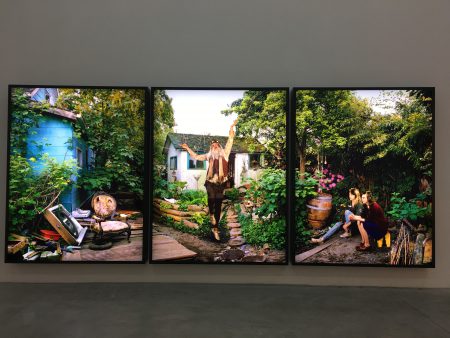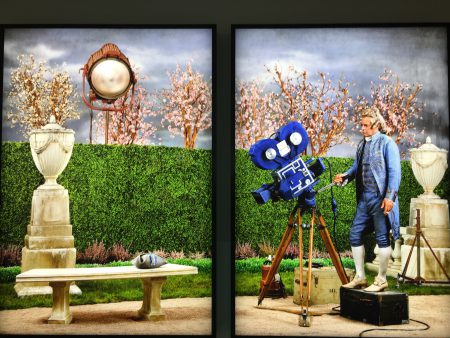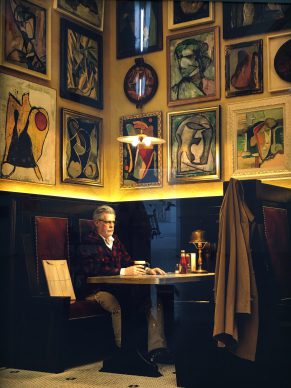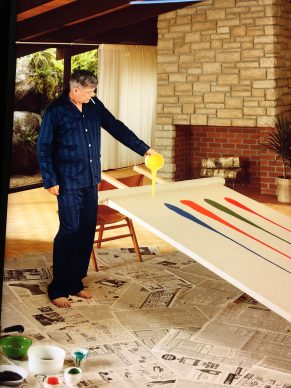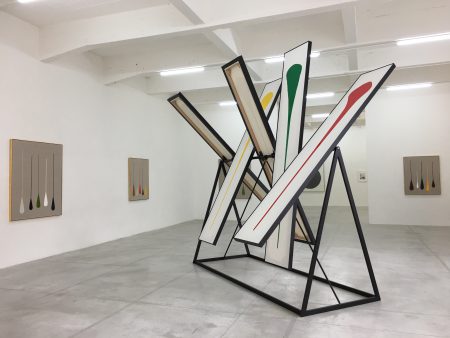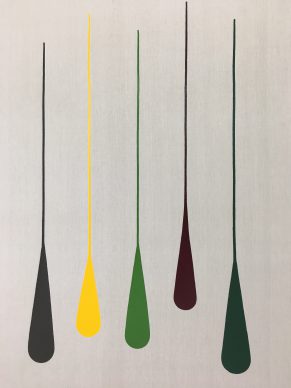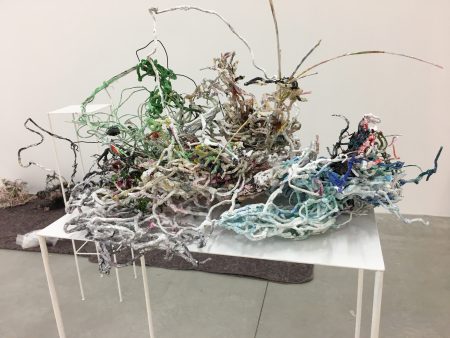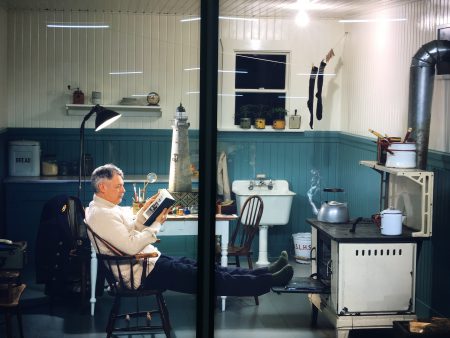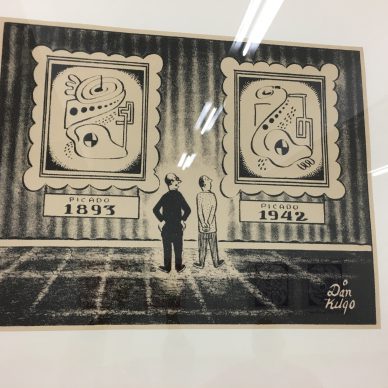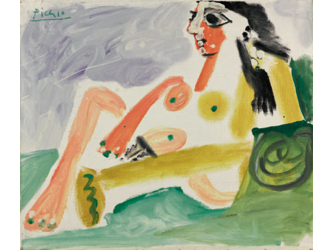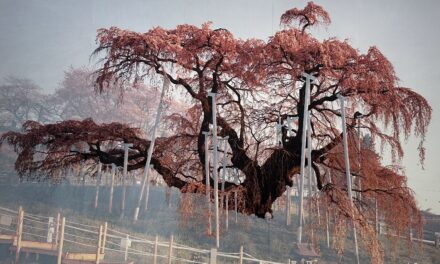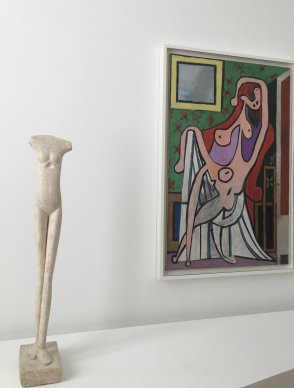I’ve told this story before. In the French charming provinces, in a place known for its Medieval kings, its snails and its wine, is a small town.
There, in one of its working class neighbourhoods is a building designed by the Japanese starchitect Shigeru Ban that houses what could be qualified as a minor miracle – one of the most relevant contemporary art programmes in the world. It is Le Consortium in Dijon, Burgundy.
Over the summer I wrote about a Wade Guyton exhibition held there (https://judithbenhamouhuet.com/report/wade-guyton-is-back-after-a-two-year-silence-hip-certainly-superficial-never/). After a two years break, it was at the Consortium that the American famous artist decided to unveil his new work.
Now it’s the turn of the Rodney Graham (b. 1949) from Vancouver, Canada to unveil a series of works that tell stories about artists.
The curators are Seungduk Kim and Franck Gautherot, both directors at Le Consortium.
Rodney Graham plays music, writes and makes videos too, but here he presents immense photos mounted on light boxes, as well as paintings and installations.
He is high-profile artist represented by New York’s 303 Gallery, Hauser & Wirth of London, New York and Zurich, and the Lisson Gallery of London and New York. His work is included in proeminent collections including François Pinault’s.
The name of the exhibition is ‘You Should Be an Artist’. He explains why:
His images are the result of scenes composed in multiple parts and backlit. They create a powerful visual impact.
Curiously, they employ the same technique used by another Vancouver-based artist, Jeff Wall.
But Rodney Graham places himself in the frame to tell stories about fictional artists who he dreams up.
The painters and sculptors in the photographs are all him.
In one, he’s an American who’s retired to Tuscany and makes, among other things, sculptures out of pipe cleaners.
In another he’s a post-cubist American painter who gives away his paintings in exchange for free meals at a Canadian restaurant.
Elsewhere, he’s a lighthouse keeper who builds miniature lighthouses to keep himself busy while he warms his feet on a heater. Graham even goes so far as to procure a uniform whose golden buttons are stamped with lighthouses!
In another, he’s a Sunday painter who after seeing works by Morris Louis thinks to himself that he can produce something equally as good (‘You should be an artist’…). His hero installs a one-day studio in his home, which looks like the Neutra house in Los Angeles. And he produces works that can be seen for real at the exhibition in Dijon.
If Rodney Graham appears to display a degree of nonchalance, in actual fact he does everything in his power to ensure his giant images are perfect.
Without even mentioning the haircuts or the clothes, he recreates the entire setting most of the time in his studio.
In one, he dates it to a specific week in November 1962, meaning that the newspapers on the floor are all from that week. But since the original copies had turned yellow, he had to have them reprinted. ‘It cost me a fortune,’ he says. He includes the paintings executed in the style of Morris Louis (and sells them during his exhibitions in galleries). Those paintings on the basis of their history can be considered purely conceptual.
Rodney slides into different characters and creates pieces that might be simple decorative elements in his fictional scenes but which he considers separate works in their own right.
You can also watch a video of him throwing potatoes at a gong. It’s hilarious.
He explains that he invented this story about an artist-performer who throws starches from his sofa:
To conclude, in today’s rich, free and confused contemporary landscape, we can note the existence of:
– artists who paint (the majority)
– artists who copy artists who paint and create performances (Elaine Sturtevant, Richard Pettibone…)
– artists who accept everything as theirs including copied works (Andy Warhol…)
– and artists who invent artists who paint and who create performances
Rodney Graham invents a history of art through supporting works. Working in a different genre, the Russian painter based in the US, Ilya Kabakov, did the same thing in 2008 for the inaugural exhibition of the Garage in Moscow by creating what he imagined to be the missing link in the history of art.
In photography the Spaniard Joan Fontcuberta (b. 1955) also creates, with supporting elements, histories that do not exist. And I forget…
Paradoxically this questioning of truth, of lies, these hyper-stylised grimaces, these fabrications about the history of art and the history of men are, in the end, an ideal tool to book one’s own place in the history of art.
Support independent news on art.
Your contribution : Make a monthly commitment to support JB Reports or a one off contribution as and when you feel like it. Choose the option that suits you best.
Need to cancel a recurring donation? Please go here.
The donation is considered to be a subscription for a fee set by the donor and for a duration also set by the donor.


